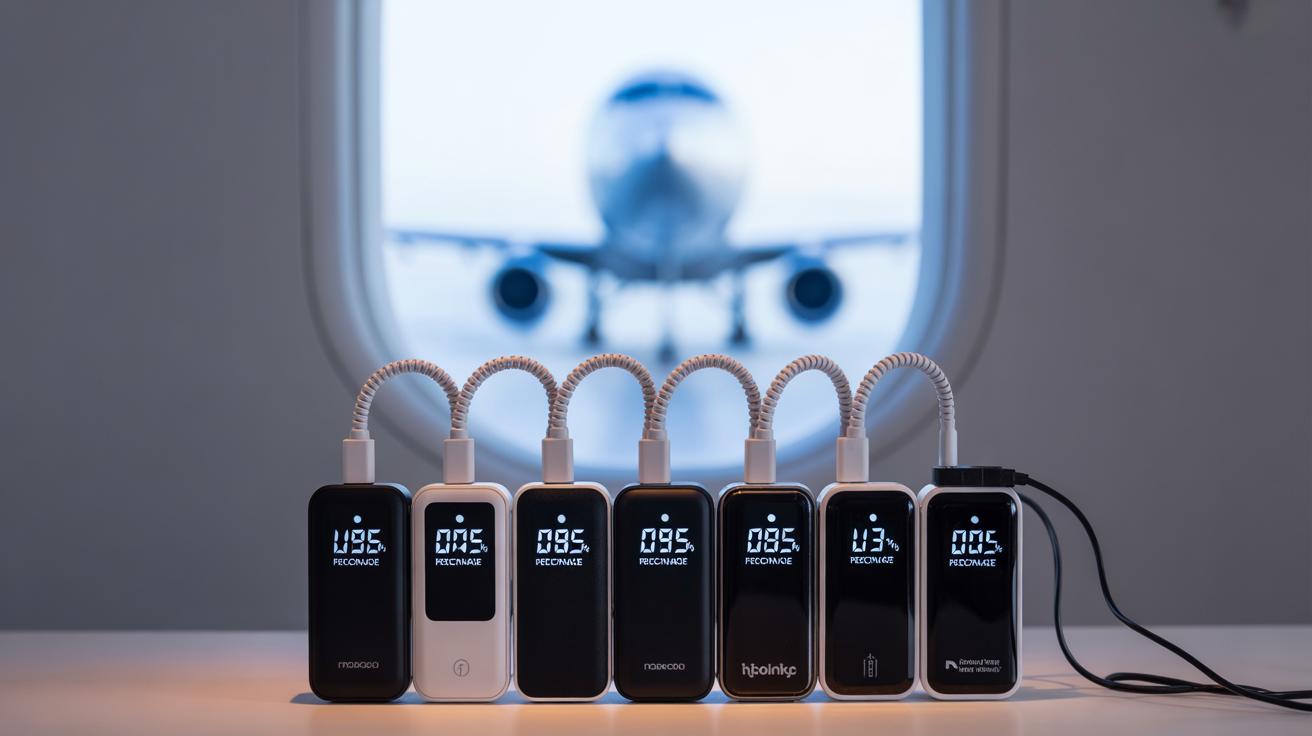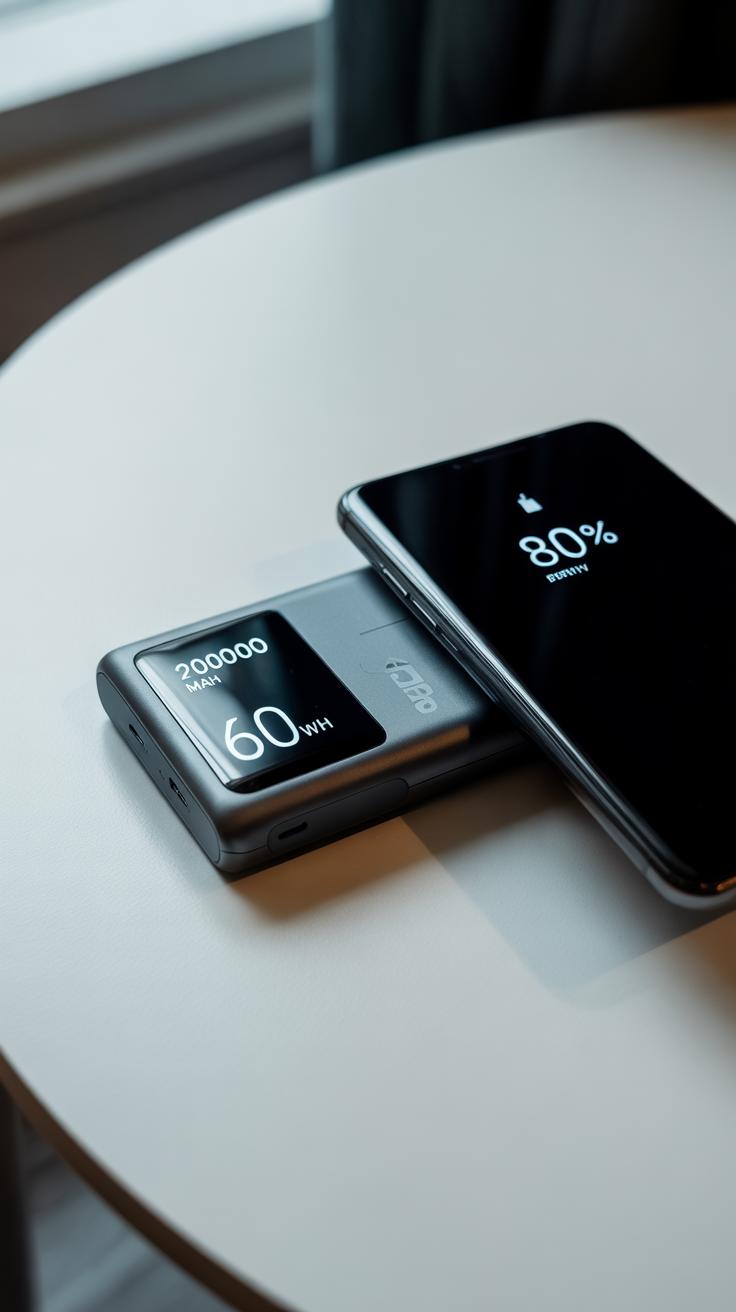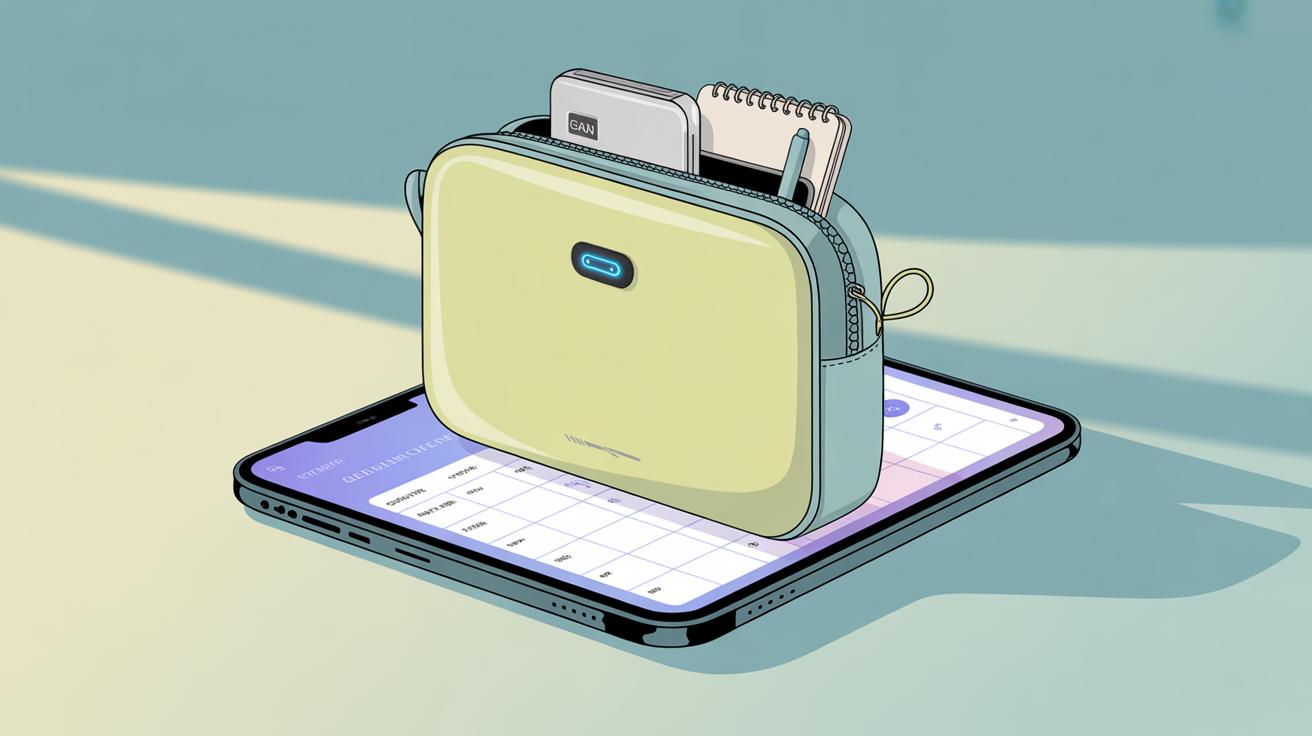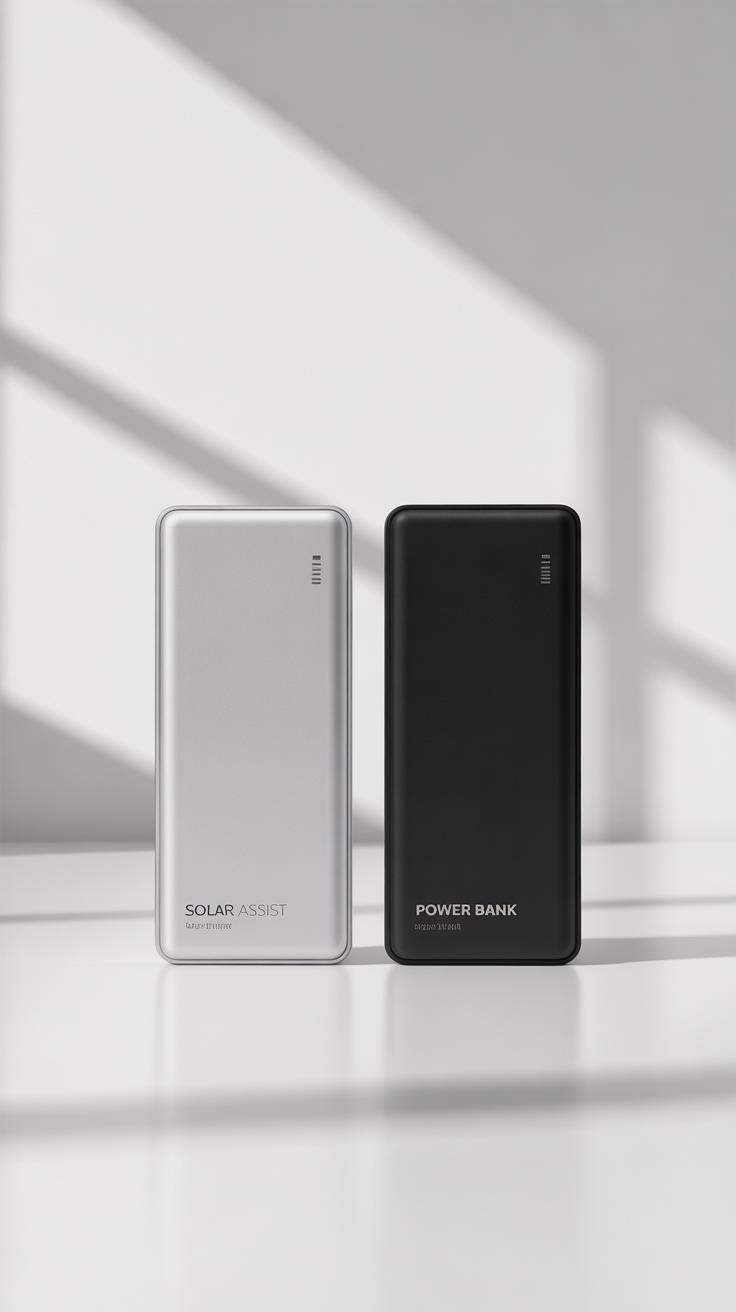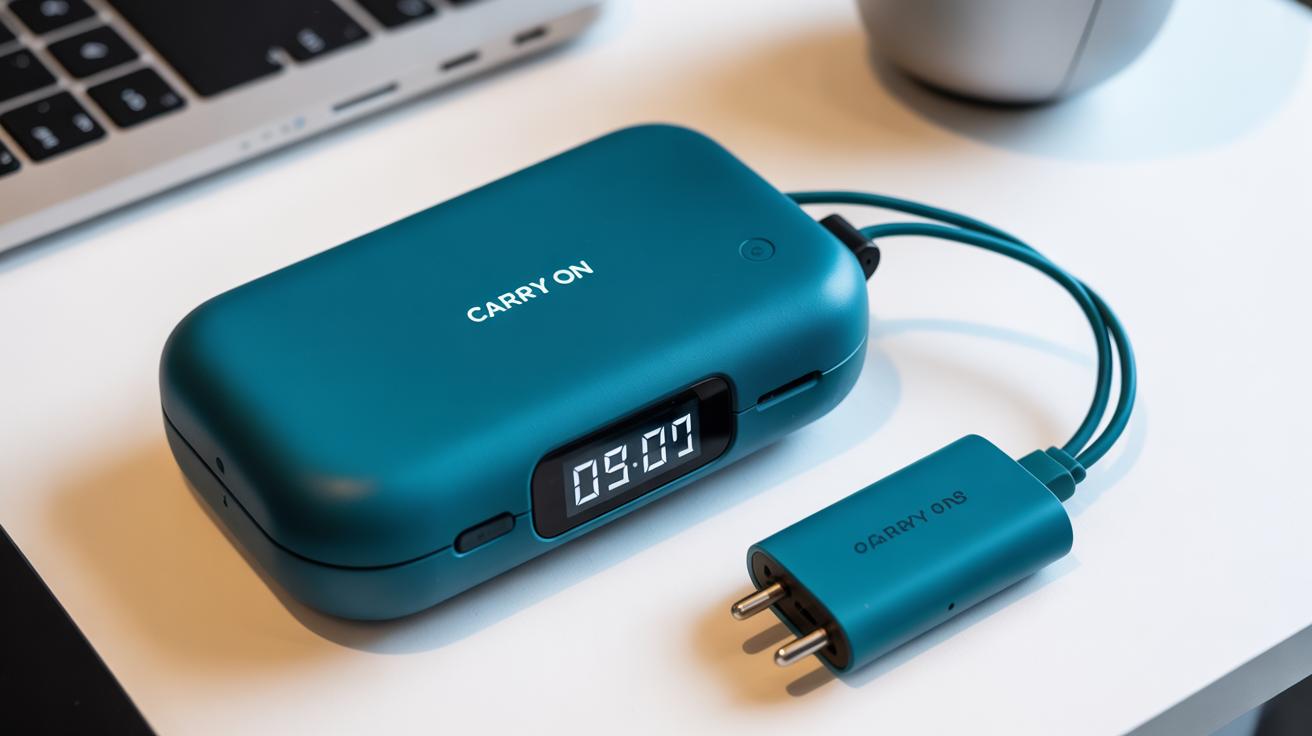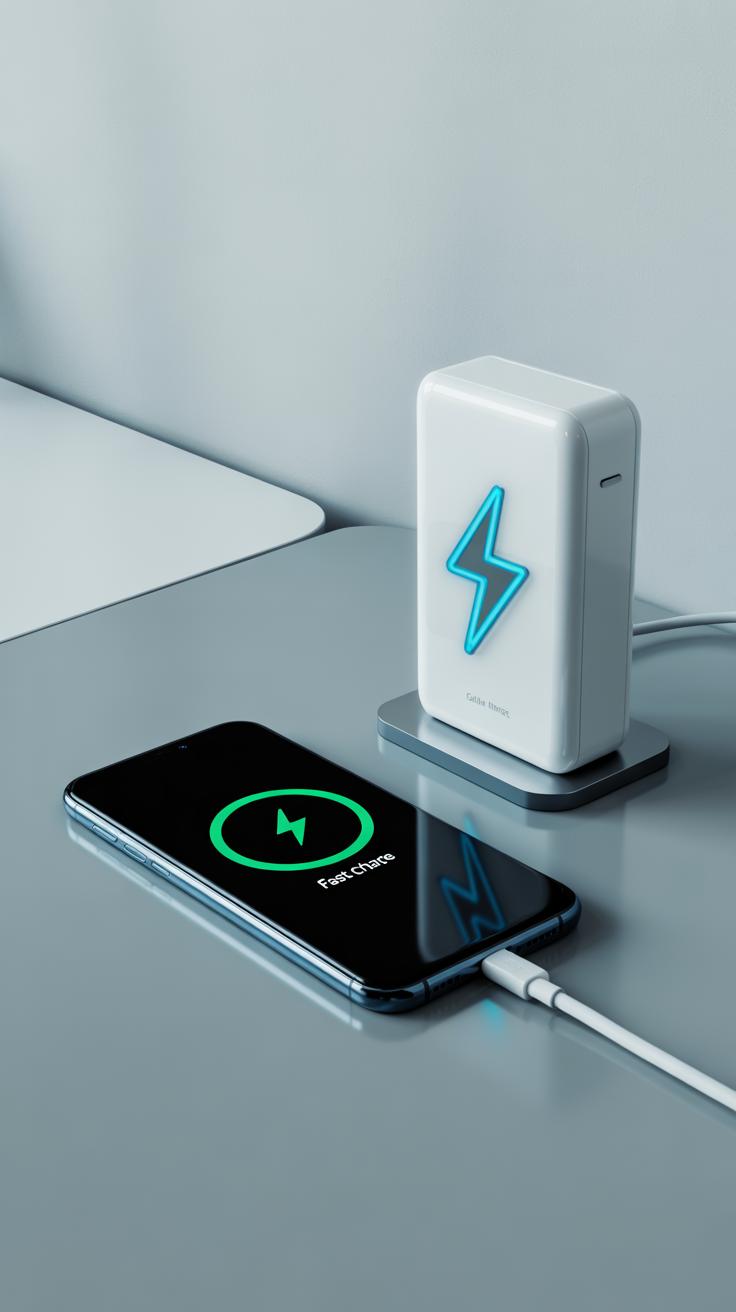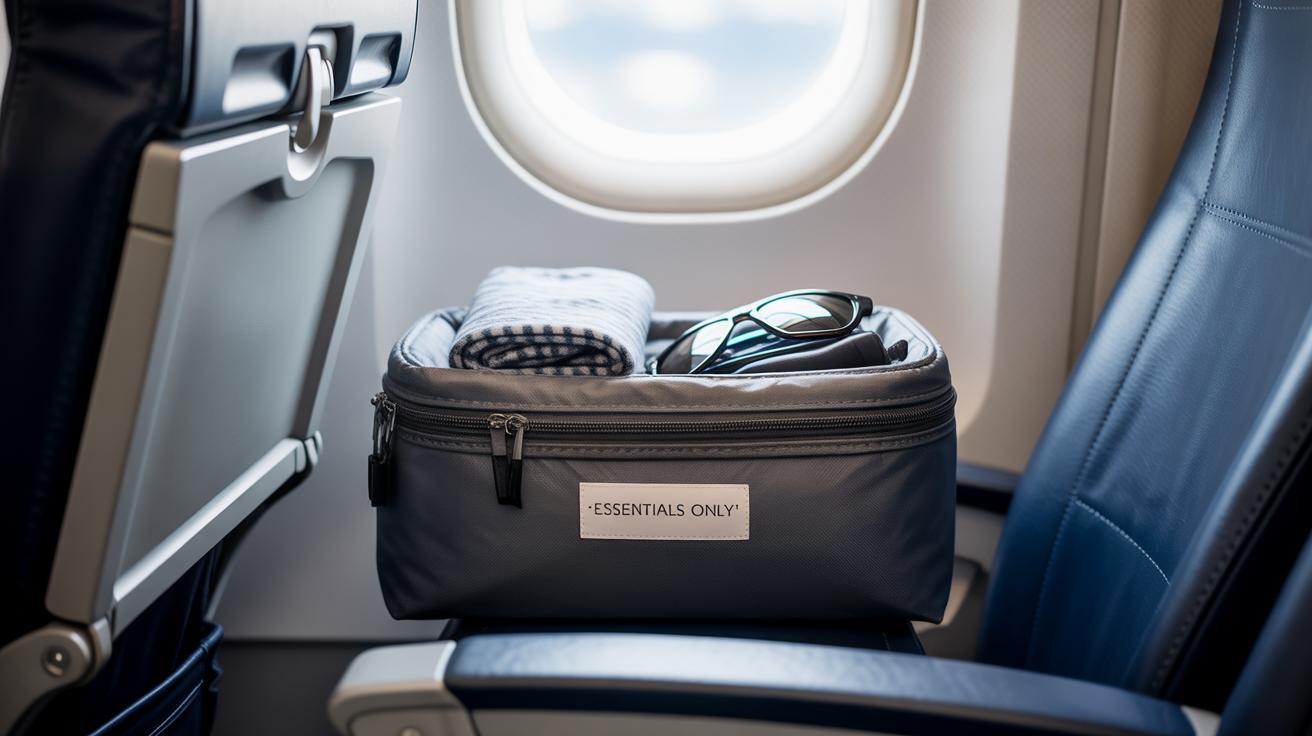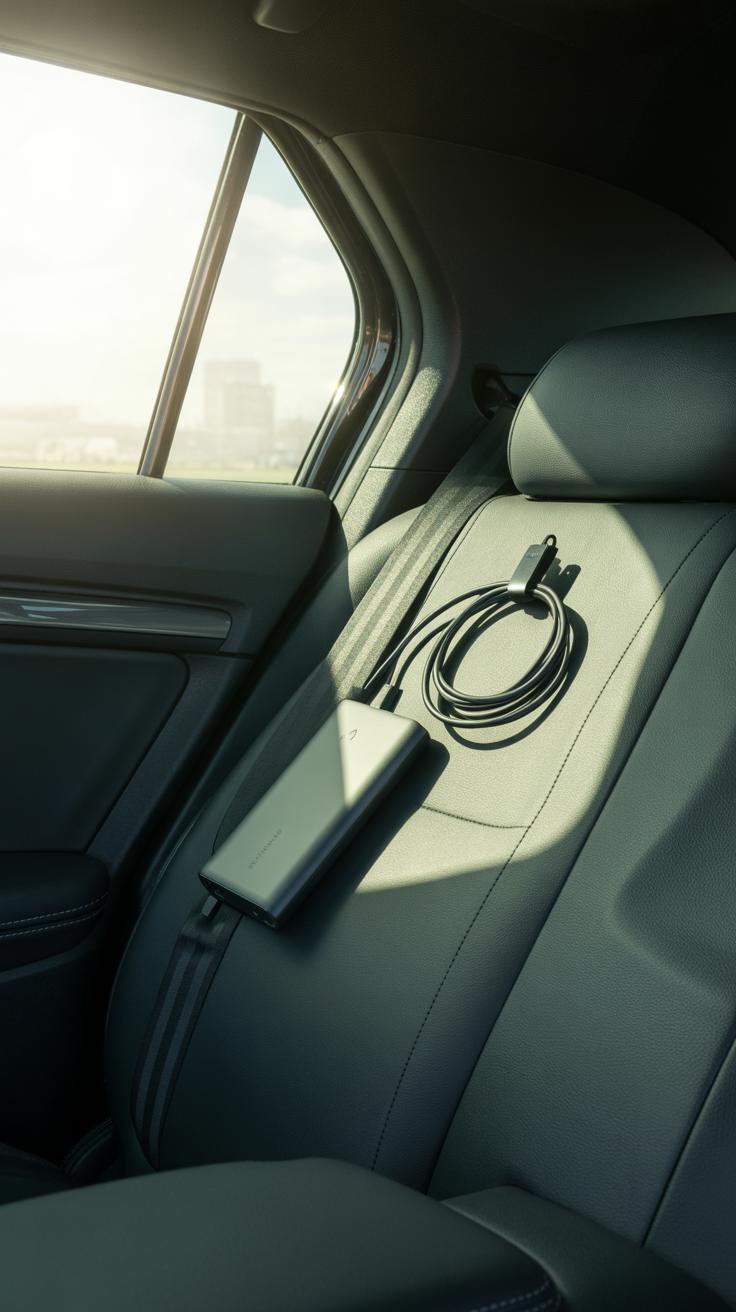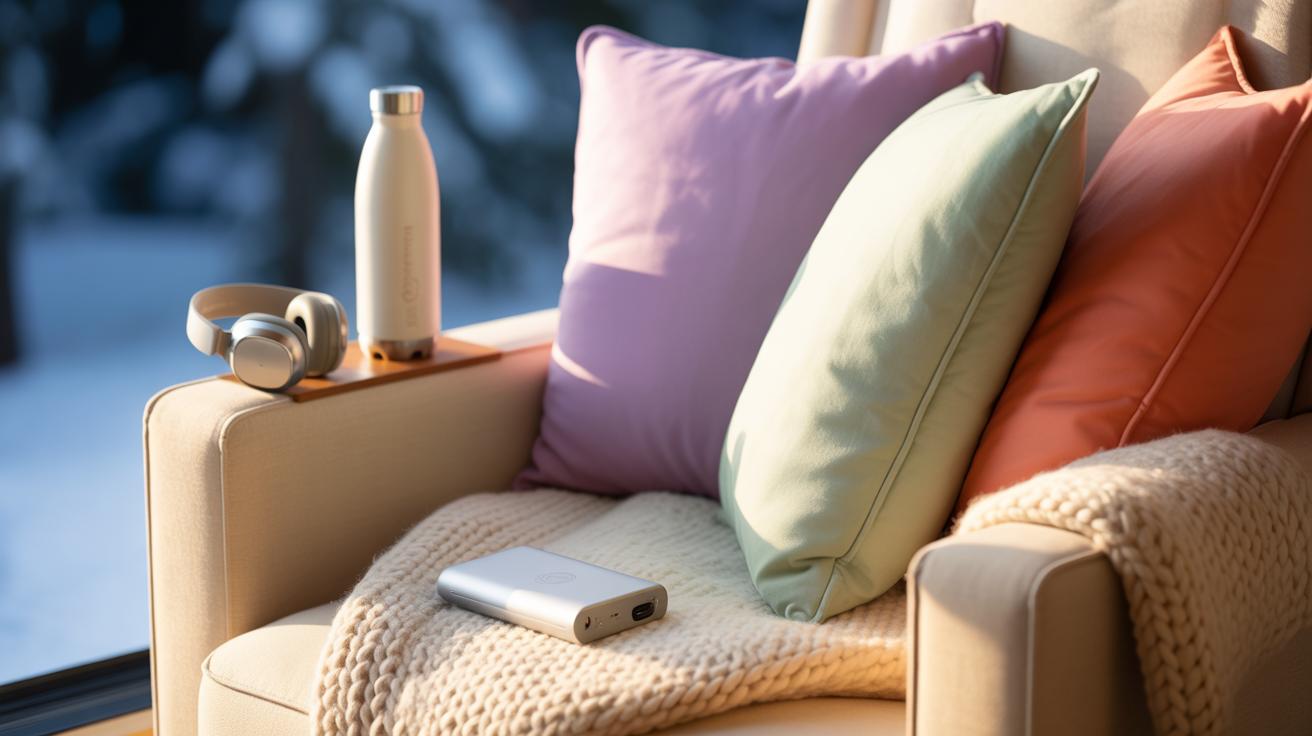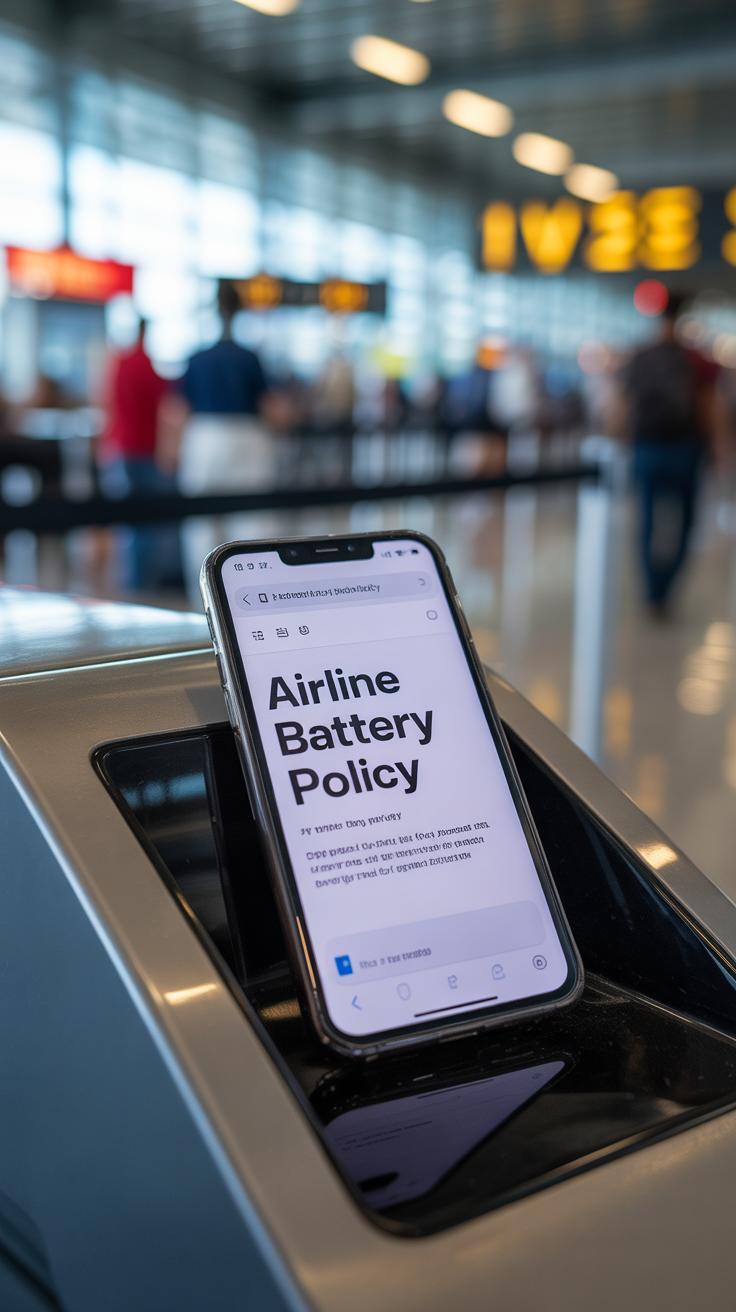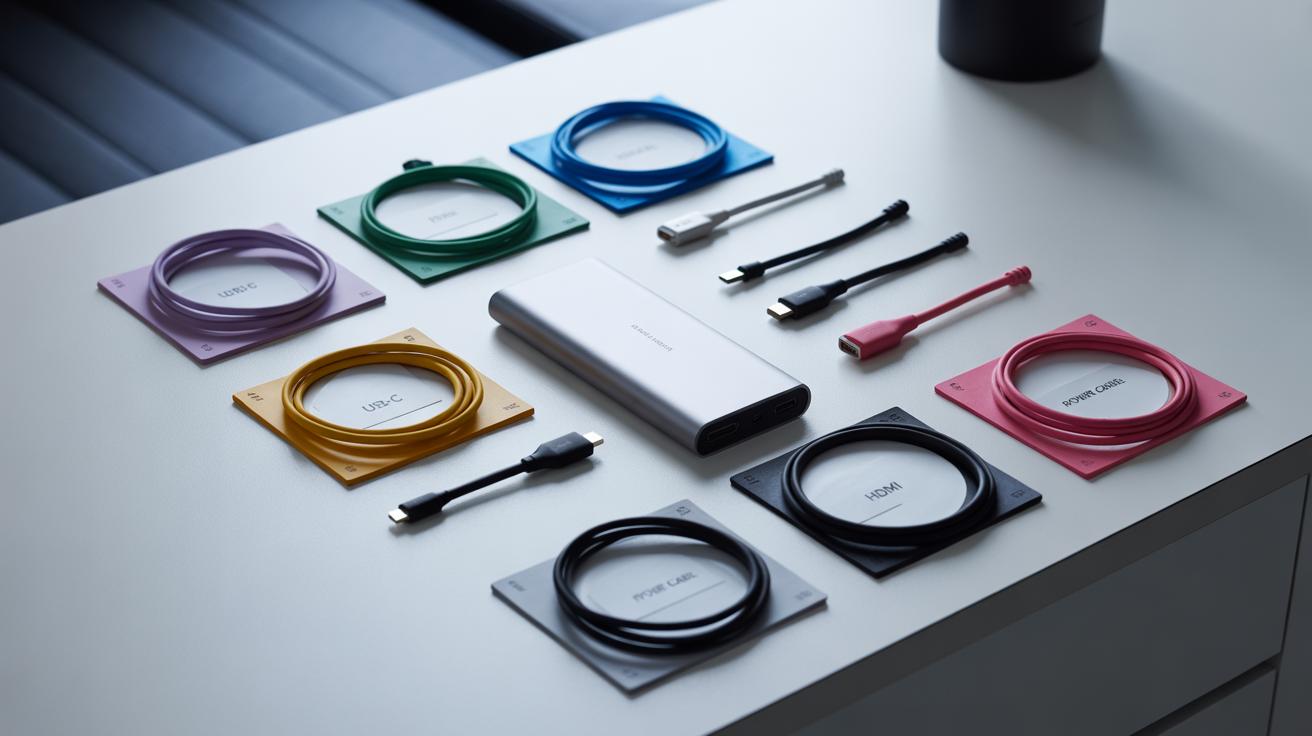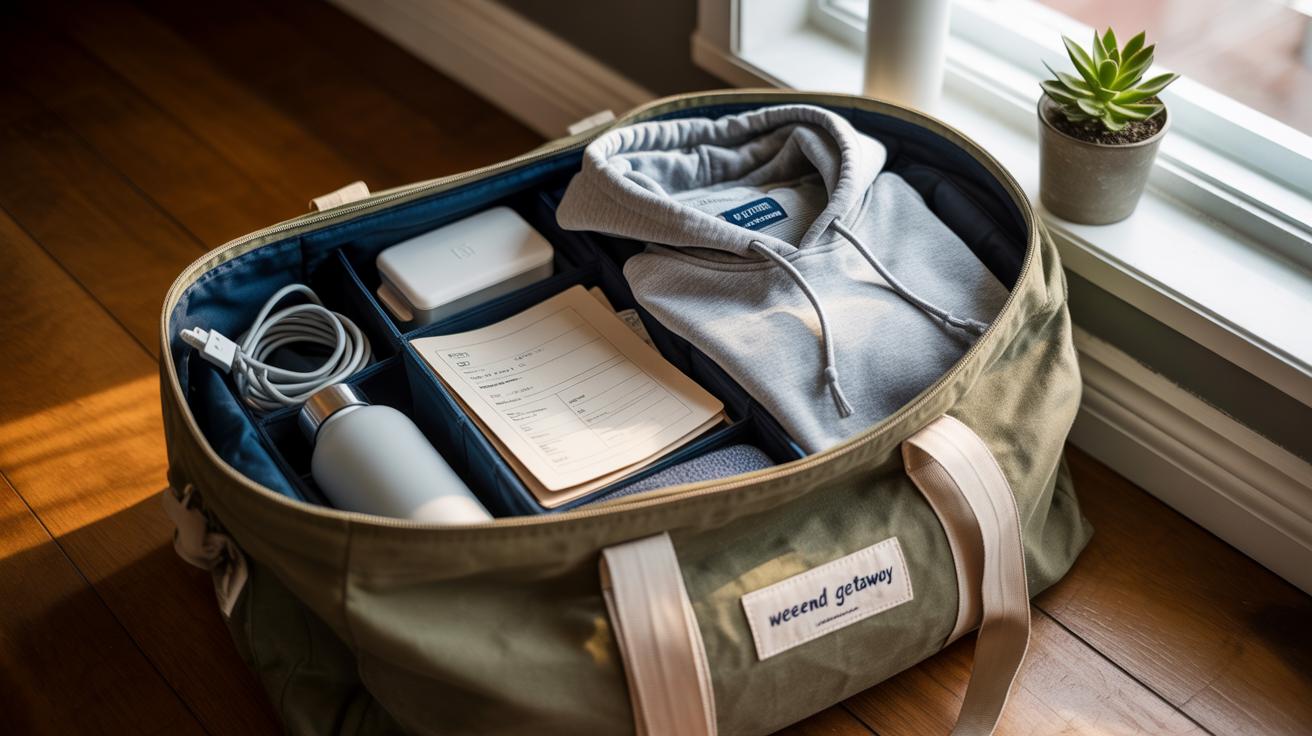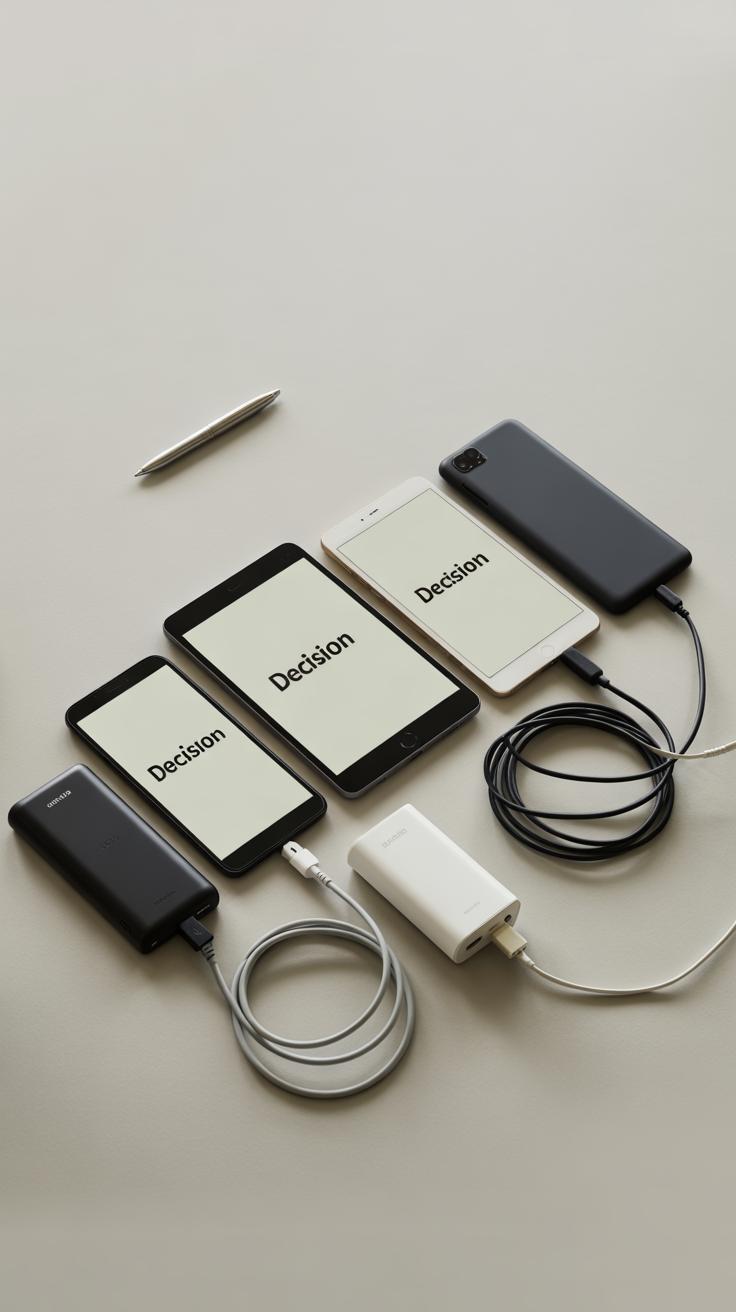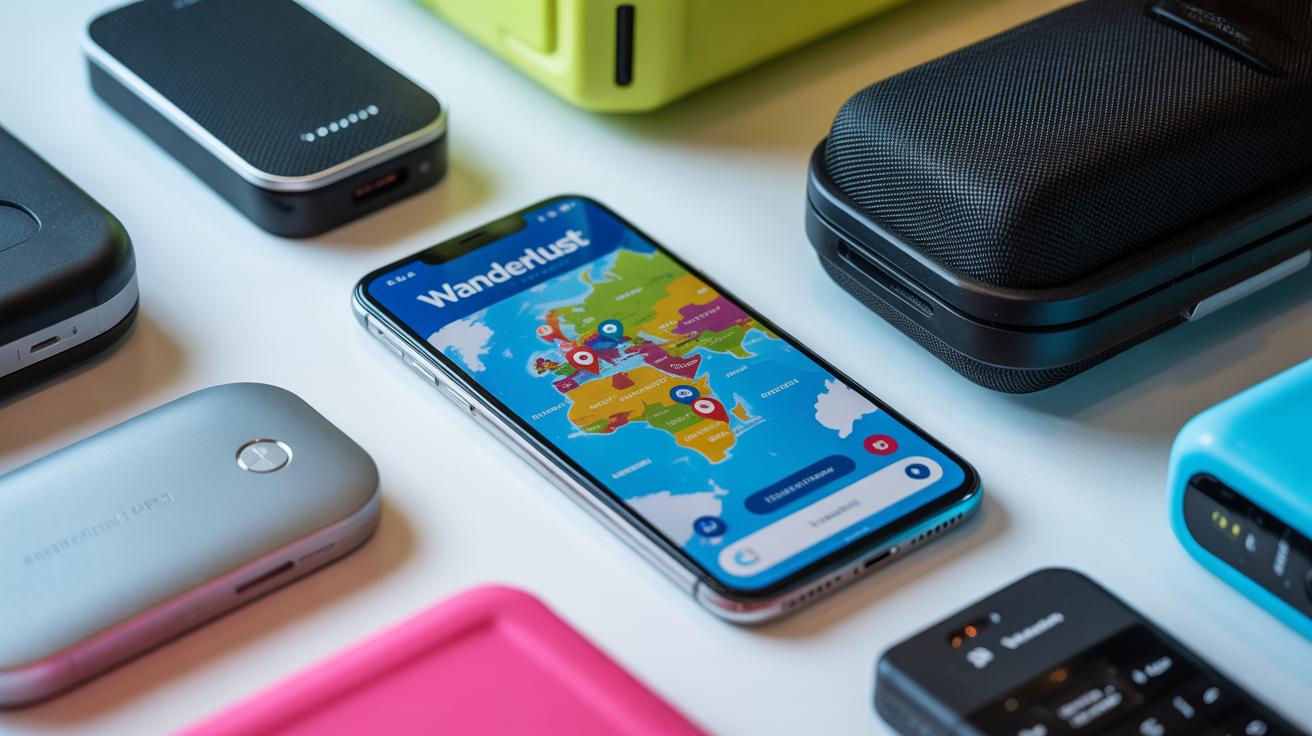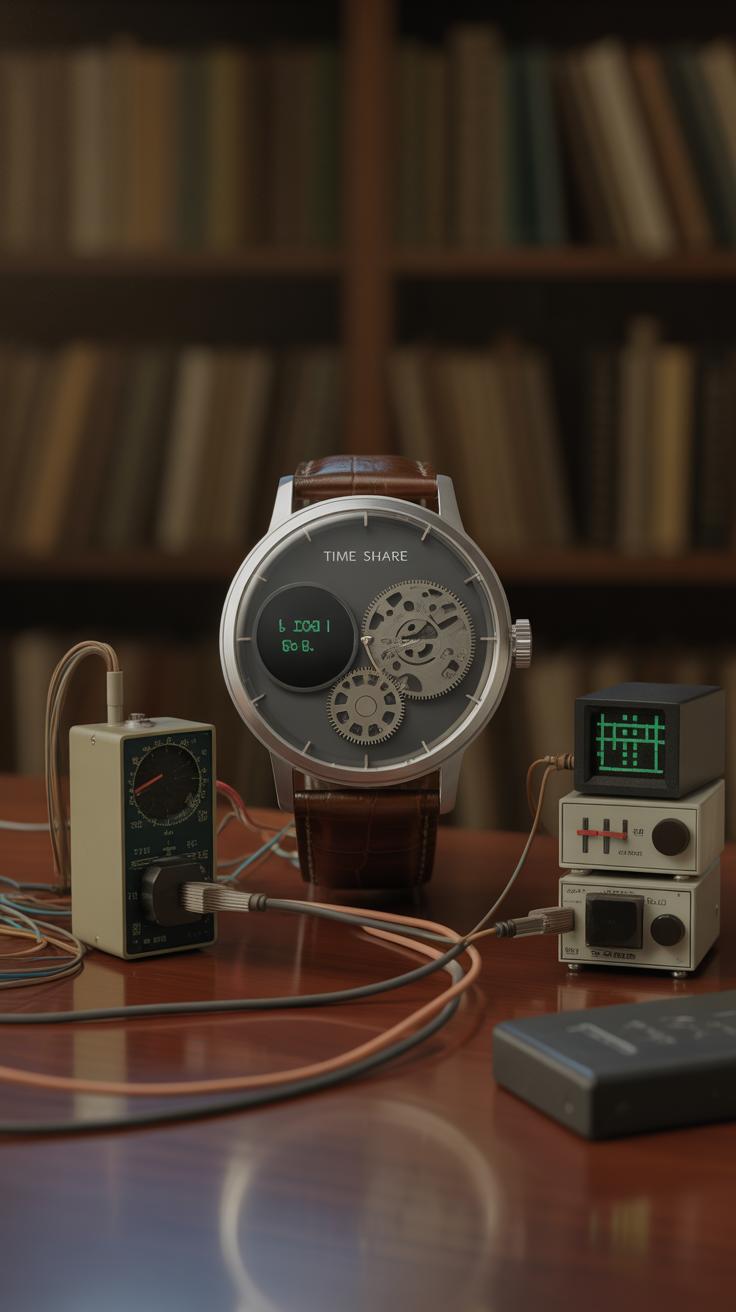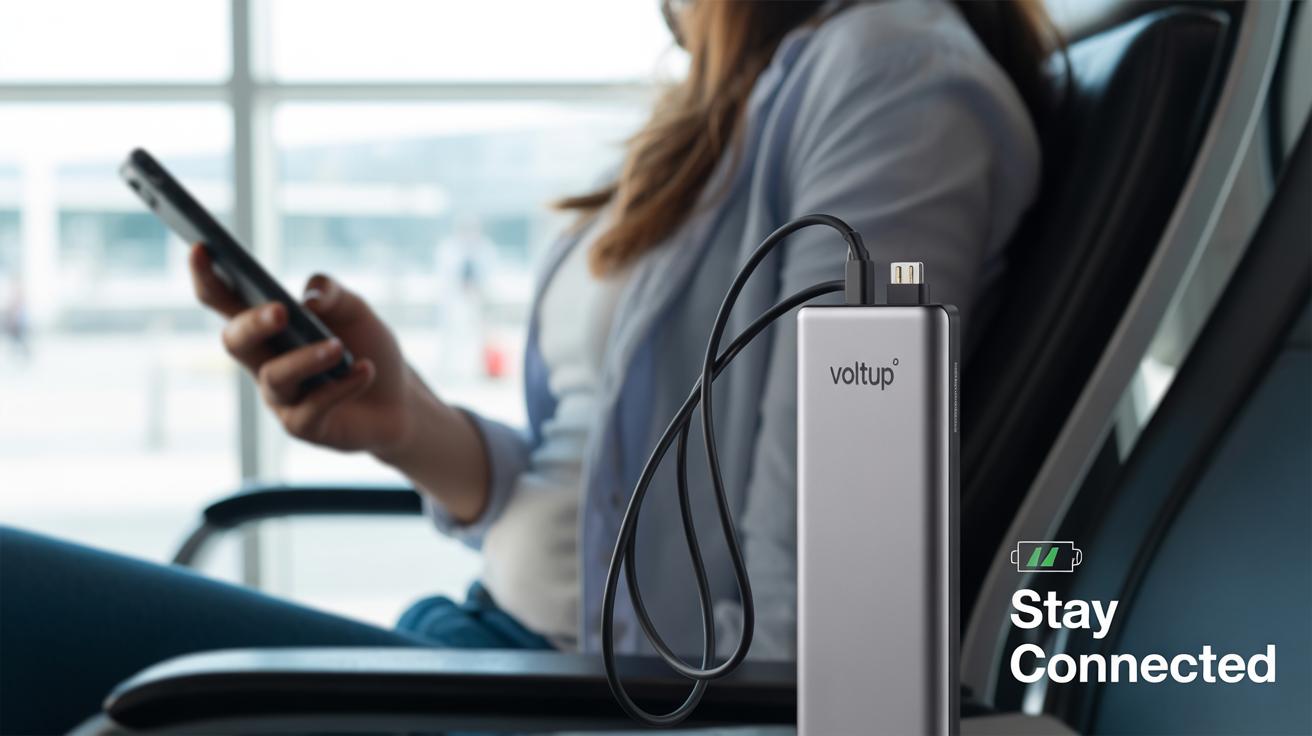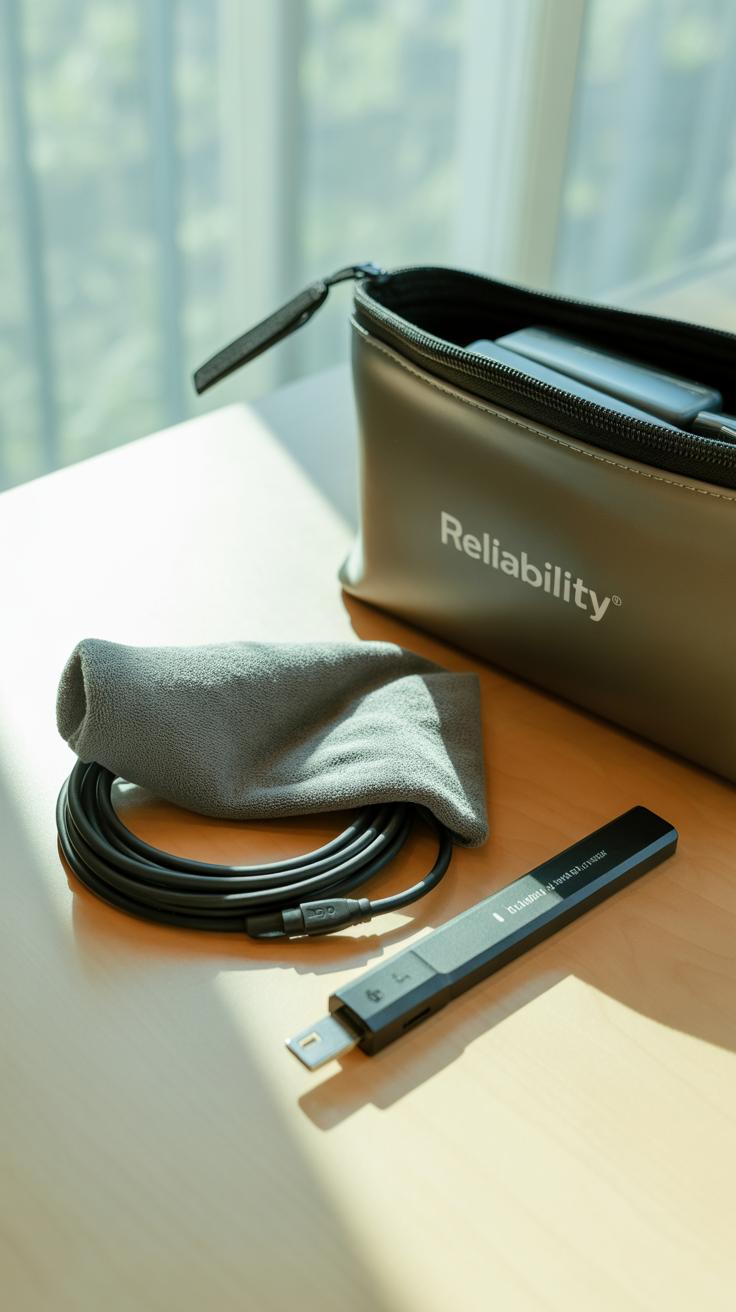Introduction
Flying often means long hours away from power outlets. During these times, your phone, tablet, or other gadgets can run out of battery, leaving you disconnected or without entertainment. A portable charger that lasts an entire flight can keep your devices powered and ready to use from takeoff to landing. This guide focuses on helping you find portable chargers that meet this need, exploring multiple factors that affect their performance during air travel.
We will walk through the best types of portable chargers, important features to consider, how to use them effectively on a plane, and airline regulations about battery-powered devices. By the end, you will be equipped to pick a charger that keeps you powered for your entire flight and beyond.
Understanding Battery Capacity For FlightLong Power
What Is Battery Capacity
Battery capacity is basically a measurement of how much charge a portable charger can store. It’s usually expressed in milliampere-hours, or mAh for short. The higher the mAh, the longer your charger can power your device before it runs out of juice. For example, a 10,000 mAh charger generally holds enough power to fully charge a typical smartphone two or three times.
But it’s not just about numbers. How long it lasts depends on your device’s battery size and how much energy it uses. If you have a large tablet, even a big-capacity power bank might not last the entire flight.
Choosing Capacity For Different Flight Durations
Picking the right capacity isn’t always straightforward. Think about your flight length first:
- Short flights (under 3 hours) may only need a 5,000 to 10,000 mAh charger.
- For medium flights (3 to 6 hours), look toward 10,000 to 20,000 mAh.
- Long-haul trips (6+ hours) often demand something over 20,000 mAh, especially if you use power-hungry devices.
Also consider what devices you’re bringing and their power consumption. A lightweight charger might feel tempting, but it could leave you stranded mid-flight. I once underestimated this and ended up scrambling for a wall socket once landed. Selecting a capacity that balances your device’s needs and flight duration keeps you covered without carrying unnecessary bulk.
Exploring Different Types of Portable Chargers
When you think of portable chargers for flights, the first thing that often comes to mind is a power bank. These are the most common kind, basically batteries you carry with you, packed into a compact case. Their appeal is easy to see—they come in all shapes and sizes, offering a straightforward way to recharge your phone or tablet multiple times. Most power banks connect via USB cables, which means compatibility isn’t usually a big hassle.
People like power banks because you can charge them fully before the flight, and then keep devices powered throughout. They last well, and some models even handle multiple devices at once. On the flip side, you have to carry the cables, which can clutter your bag.
Then there are solar chargers. They use sunlight to generate power. Sounds great in theory, right? But for air travel, they’re a bit… tricky. Planes don’t provide much direct sunlight inside the cabin, and airports might not have sunny spots to plug in solar panels before takeoff. Plus, solar chargers usually need hours of good light to be worth using. For longer layovers outside, sure, they can be handy, but during the flight itself? Not very practical.
Wireless chargers, or inductive chargers, work differently. You just place your device on their surface—no cables needed for charging your phone. This is neat for quick, convenient power-ups. Yet, most planes don’t have outlets or surfaces designed for wireless charging, so you’d still need a power source to keep the charger itself running. Also, wireless chargers tend to be slower and bulkier compared to power banks.
So, for flights, power banks seem the go-to choice. They’re reliable, easy to use, and you can pick one to match your device’s needs. Solar and wireless chargers could play a role too, but maybe more as secondary options or for charging between flights rather than during.
Fast Charging Technologies And Flight Convenience
USB Power Delivery And Other Standards
USB Power Delivery, or USB-PD, is a charging standard designed to push more power through compatible cables and devices. It adjusts voltage and current dynamically, allowing smartphones, tablets, and even laptops to juice up faster than traditional USB chargers. You might have noticed that your phone can jump from 0 to 50% in about 30 minutes with the right charger—that’s USB-PD doing its thing.
Besides USB-PD, there are other standards like Quick Charge and Samsung’s Adaptive Fast Charging, each with their quirks, but USB-PD is gaining wider support due to its flexibility and safety features. USB-PD negotiates exactly how much power a device needs, which can prevent overheating or damage during rapid charging—a key point when you’re cramming charging time before a flight.
Benefits Of Fast Charging On A Flight
Fast charging is a real game changer for travelers. Imagine arriving at the airport only to realize your phone’s battery is almost dead. With a fast charger and a portable power bank that supports USB-PD, you can recover significant battery life in just 20 to 30 minutes. That means less waiting connected to wall outlets that are often scarce or inconvenient.
During the flight, if power outlets are available on your seat—or you’re lucky to have a compatible power bank—you can top off devices quickly without the tedious hours needed by standard chargers. This minimizes downtime and keeps your gadgets ready for inflight entertainment, work, or communication the moment you land.
But keep in mind, fast charging can sometimes generate heat, so monitoring device temperature becomes crucial to avoid any hiccups during travel. So, if you’ve ever wondered why some chargers or cables feel warmer than others, this might explain it.
How To Safely Use Portable Chargers On An Airplane
When taking portable chargers on a flight, safety isn’t just about following airline rules—it’s about how you handle and operate the device in confined spaces. You probably noticed that these chargers can get warm after a while, especially if you’re charging multiple devices. Overheating can happen, but careful use often keeps it in check.
Here are some practical tips to keep your charger safe while airborne:
- Keep the charger in a cool, ventilated spot, away from blankets or tight spaces that trap heat.
- Switch the charger off or unplug it when you’re not actively charging your phone or tablet. It’s a simple step but easy to overlook.
- Don’t stack devices on top of the charger—pressure and blocked airflow raise the risk of overheating.
- Avoid using damaged cables or chargers—frayed wires might cause shorts, which you don’t want onboard.
Handling the charger is straightforward: hold it firmly, avoid dropping it, and don’t expose it to liquids from your drink or condensation from the cabin air. If it feels excessively hot, give it a break and maybe ask a flight attendant if that’s normal. In my experience, once the charger gets too warm, it can start to perform poorly or shut down unexpectedly.
Short circuits or battery damage are rare if you take these steps. Still, they’re risks worth keeping in mind. Charging devices in airplane mode can reduce current draw and heat, which I find useful. Also, consider that some flights might ask you to stow electronics during takeoff and landing—so plan your charging accordingly. You really want to avoid being that person fiddling with gadgets when the seatbelt sign’s on.
Airline Rules About Batteries And Portable Chargers
When you’re packing your portable charger for a flight, you’ll want to keep airline regulations in mind — they’re not exactly the same everywhere, but some rules tend to pop up quite often.
Battery Size And Quantity Limits
Most airlines follow general guidelines that limit lithium-ion batteries by capacity, usually measured in watt-hours (Wh). For example:
- Portable chargers below 100 Wh are generally allowed in carry-on bags without approval.
- If your charger is between 100 Wh and 160 Wh, you might need airline approval, and only a couple are typically permitted per passenger.
- Chargers over 160 Wh essentially aren’t allowed on passenger planes, either in carry-on or checked baggage.
Also, batteries must never go in checked luggage. Airports want you to keep them with you, possibly in case of overheating or fire risk. Carrying several large capacity power banks? That might get flagged, so spreading them between travelers or sticking to smaller ones feels safer.
Usage Restrictions During Flight
When it comes to turning on your charger onboard, some airlines are quite cautious. Most require that power banks remain off during takeoff and landing, the most critical phases. Then, once the plane’s at cruising altitude, you can use your charger but often only to power your own device, not to recharge other items or share power.
Usually, plugging chargers directly into seat power outlets isn’t a problem, but the rules around using them to power multiple devices or using chargers with built-in batteries can vary. Some crews might ask you to switch them off during unexpected turbulence or if they think it’s a safety concern.
Have you ever been told to put away your charger mid-flight? It happens. And it’s a reminder — these regulations exist because lithium-ion batteries can cause trouble if damaged or mishandled under pressure or temperature changes.
Choosing The Best Portable Charger For Your Device
Picking the right portable charger means matching it closely to your device’s battery needs and the way you use it during flights. It’s tempting to just grab the biggest power bank you find. But bigger isn’t always better if it’s too bulky or heavy to carry around comfortably.
Start by checking your device’s voltage and current requirements. Most phones need around 5 volts, but tablets or some laptops might require more or different current levels. Using a charger that can deliver the proper voltage and enough amps ensures your device charges safely and at a good speed.
Look at the charger’s output specs, usually shown as volts and amperes. If your phone supports fast charging, pick a charger that outputs sufficient current—often 2 amps or higher. Some newer devices prefer USB-C PD chargers, which adjust voltage dynamically.
Size and weight really matter, especially for air travel. A charger with high capacity can keep you powered longer but often comes with extra bulk and heft. For instance, carrying a 20,000 mAh power bank could mean a heavier bag, which might be inconvenient if you plan to move around the airport frequently. On the other hand, a smaller 10,000 mAh charger is lighter but may not last a whole international flight.
Think about your typical usage patterns. Do you just need to recharge a phone a couple of times, or will you be powering multiple devices? And will you be sitting still or rushing through terminals? These factors can sway your choice between a compact charger and a more capacious one.
Lastly, check the number and type of charging ports. Multiple USB outputs let you charge more than one device at a time, but this might also mean slower charging speeds if the power is split. Also, make sure the cables you bring match the charger’s ports. Sometimes you need to carry adaptors or extra cords, which adds to what you lug around.
Maximizing Your Portable Charger Usage On Long Flights
When you’re hours away from the next power outlet, every bit of battery counts. One of the first things you can do is tweak your device settings to stretch both your portable charger and your device’s own battery life. Lowering screen brightness can save a surprising amount of power. You might think it makes little difference, but over several hours, that small change adds up.
Switching your device to airplane mode is another simple step. It cuts off most wireless activity, which is often the biggest drain. Maybe you want Bluetooth on for headphones, or Wi-Fi during in-flight entertainment, but turning off unnecessary connections usually helps conserve energy quite a bit.
As for charging during the flight, consider this: charge your power bank fully before boarding, but if there’s an outlet on the plane, use it to recharge your device first. This way, your power bank stays ready for when the outlet’s heart stops beating or the in-flight system powers down. If you can, charge your device and portable charger separately rather than both at once—it might mean longer lasting energy since your charger won’t be split delivering power.
It’s maybe odd, but sometimes charge your device just enough to get through the next hour or two rather than pushing it to 100%. Partial charges might save the battery’s overall health, which can make a difference on longer trips. Have you noticed your power bank or device heating up? That’s a sign to give them a break because heat can reduce battery capacity faster than anything else.
There’s no one perfect approach, of course. But paying attention to these little details helps you avoid those frustrating moments when your device dies mid-flight, leaving you with nothing but the cramped space and dull hum of the cabin.
Maintenance Tips To Keep Your Portable Charger Ready
Proper Charging And Storage Practices
Treat your portable charger like a delicate gadget—not just a battery you toss in a bag. Charging it regularly and avoiding extreme battery levels makes a difference. Try to keep the charge between around 20% and 80% instead of letting it drop to zero or fully charge every time. This can slow down battery wear, though you might find it a bit tedious to monitor.
Storing your charger also matters. Leaving it plugged in constantly or stashing it away completely drained can reduce its lifespan. If you won’t use it for a while, charge it halfway before putting it away. And keep it in a cool, dry spot. Don’t throw it in hot places like a car on a sunny day—those temperature swings can degrade the battery faster. I once left mine in a backpack on a hot day, and it seemed to lose capacity noticeably after that.
Troubleshooting Common Charger Issues
Sometimes your portable charger just won’t hold a charge or stop working as expected. Before you panic, try these quick fixes:
- Reset it by fully discharging and then recharging overnight. It can recalibrate the battery meter.
- Check cables and ports for dirt or damage. A dirty USB port might seem like a dead charger.
- Try a different cable or power source to rule out simple connection problems.
- If the charger heats up excessively, unplug it and let it cool down. Overheating can signal internal trouble.
Occasionally, older chargers just wear out and won’t perform like before. Still, these small checks often save you a trip to buy a new one. Ever noticed your charger draining oddly fast? Sometimes firmware updates may help if your model supports it, but not all do. A bit of patience and a few simple steps can keep your charger ready for the next flight, but when it’s time to replace, you’ll know.
Top Portable Charger Models Ideal For Flights
High Capacity Power Banks
When you’re facing a long-haul flight, running out of juice isn’t really an option. That’s where high capacity power banks come in. These can keep your devices charged through hours of in-flight entertainment or work. For example, the Anker PowerCore 26800mAh is a popular choice. It holds enough energy to charge a smartphone several times over, even a tablet once or twice. I’ve tried it on a 10-hour flight before, and it kept my phone alive with some power to spare, which felt almost excessive—yet reassuring.
Another option is the RAVPower 20000mAh. It’s slightly smaller but still packs a punch that often lasts through a full flight. If you want a bit more versatility, the Zendure SuperTank with 27000mAh offers USB-C Power Delivery, so it works nicely with newer laptops too. These high capacity banks do tend to be heavier, and yeah, they take a while to recharge themselves, but they really shine when you need dependable power without hunting for outlets.
Compact Chargers With Fast Charging
If bulk isn’t your thing, compact fast chargers may be more up your alley. They’re easier to tuck away yet still deliver surprisingly quick charge times. The Anker PowerCore III Fusion blends a charger and a power bank in one, making it incredibly travel-friendly. It supports fast charging so you won’t feel like your devices are wringing out every last drop of life.
Similarly, the Aukey Basix Mini is small but punches above its weight with Quick Charge 3.0 technology, meaning your device spends less time tethered to the cable. It’s perfect for flights where you want to keep your bag light but still need speedy top-ups. Although these compact models usually don’t hold as much total power as their bigger counterparts, they strike a decent balance for shorter flights or when you want to stay nimble.
Ultimately, it depends on what your flight looks like. Long trip? Go big. Short or carry-on only? Something smaller might serve you better, and these picks cover both ends pretty well.
Conclusions
Selecting a portable charger that lasts an entire flight requires understanding capacity, charging technology, and safety rules. Chargers with larger battery capacities and modern fast-charging features offer longer use and faster recharge times. Choosing a lightweight yet high-capacity model balances convenience with performance.
Also, ensure your charger complies with airline regulations on lithium batteries and pack it with care to avoid issues at security. Using your portable charger wisely by minimizing unnecessary use during flights can further extend battery life. With the right charger and knowledge, you can stay connected and comfortable throughout your journey.

